Workshop: EDIBLE LIQUID FRACTAL:
Goal: Prepare an edible fractal structure mixing two liquids. The fractal must grow at a rate that its growth could be seen by the human eye. Besides, the fractal will be sweet!
Ingredients:
For the base liquid:
- 0,5 L of water
- 100 g of honey (do not use dark honey)
- 2 units of star anise (to flavour the dessert)
- 100 g of Xylitol
- 1,5 g of Xanthan gum
For the coloured liquid
- 15 mL of water
- 2 g of sugar
- Food colouring
Material (we can use either lab material or equivalent kitchen utensils instead)
- 500 mL beaker
- 500 mL graduated cylinder
- Electronic scale
- Spoon
- Watch glass
- Hand blender
- Tripod
- Wire gauze
- Bunsen burner
- Crystallization dish
Preparation of the base:
- Pour water and honey into a 500 mL beaker
- Heat it until the mixture boils
- Once it is boiling, steep the star anise for 5 minutes
- Let it cool for 10 minutes
- Add the Xylitol and the Xanthan gum
- Mix with a blender. Do not leave any lumps of Xanthan Gum
- Keep the mixture for a day in the fridge (4-8 ºC)
Preparation of the coloured liquid
- Mix water, sugar and food colouring
- Heat the mixture (not to much, 40 ºC in the microwave is enough).
- Use different colours
Creation of the fractal:
- Pour gently a spoonful of the coloured solution onto the cool base.
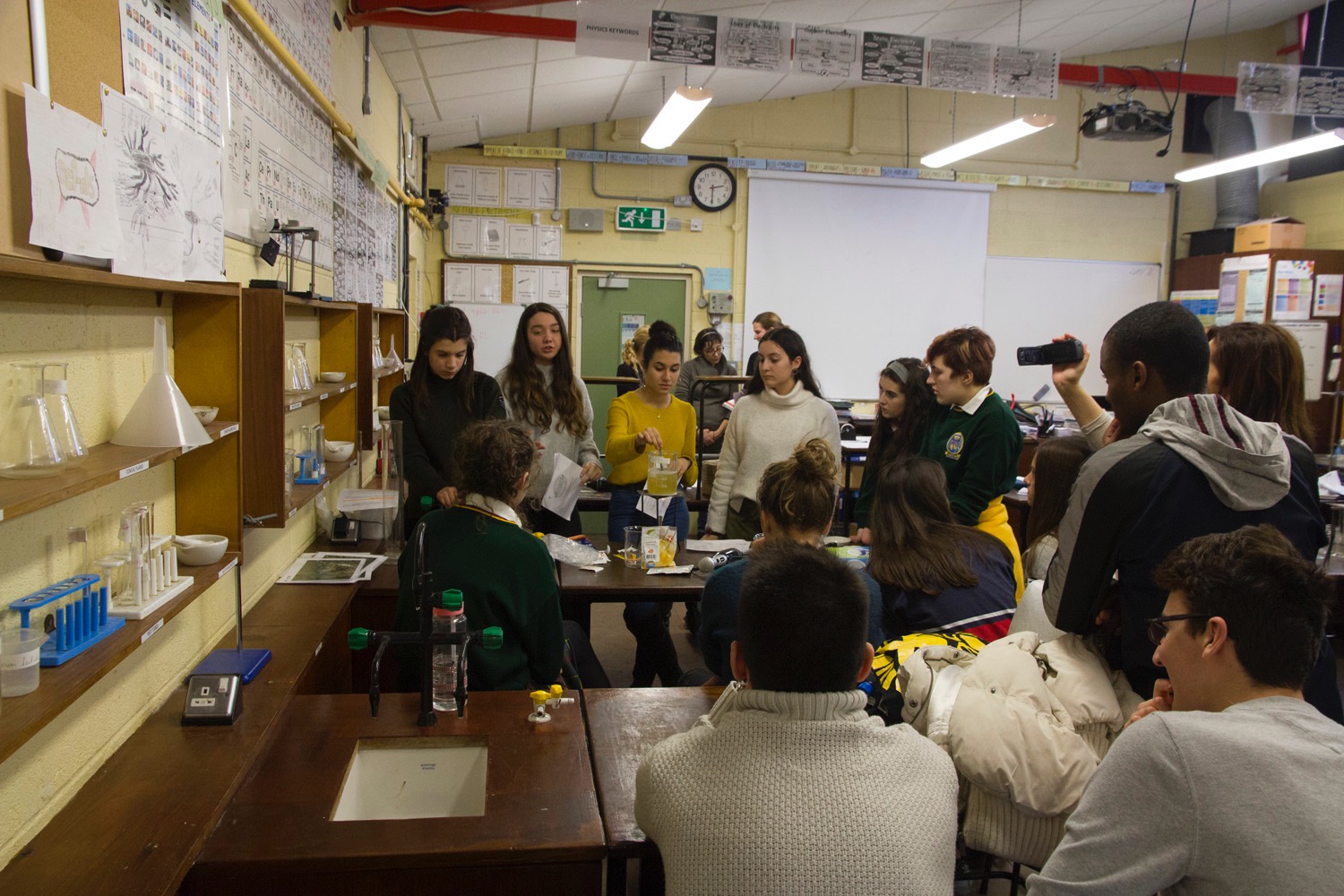
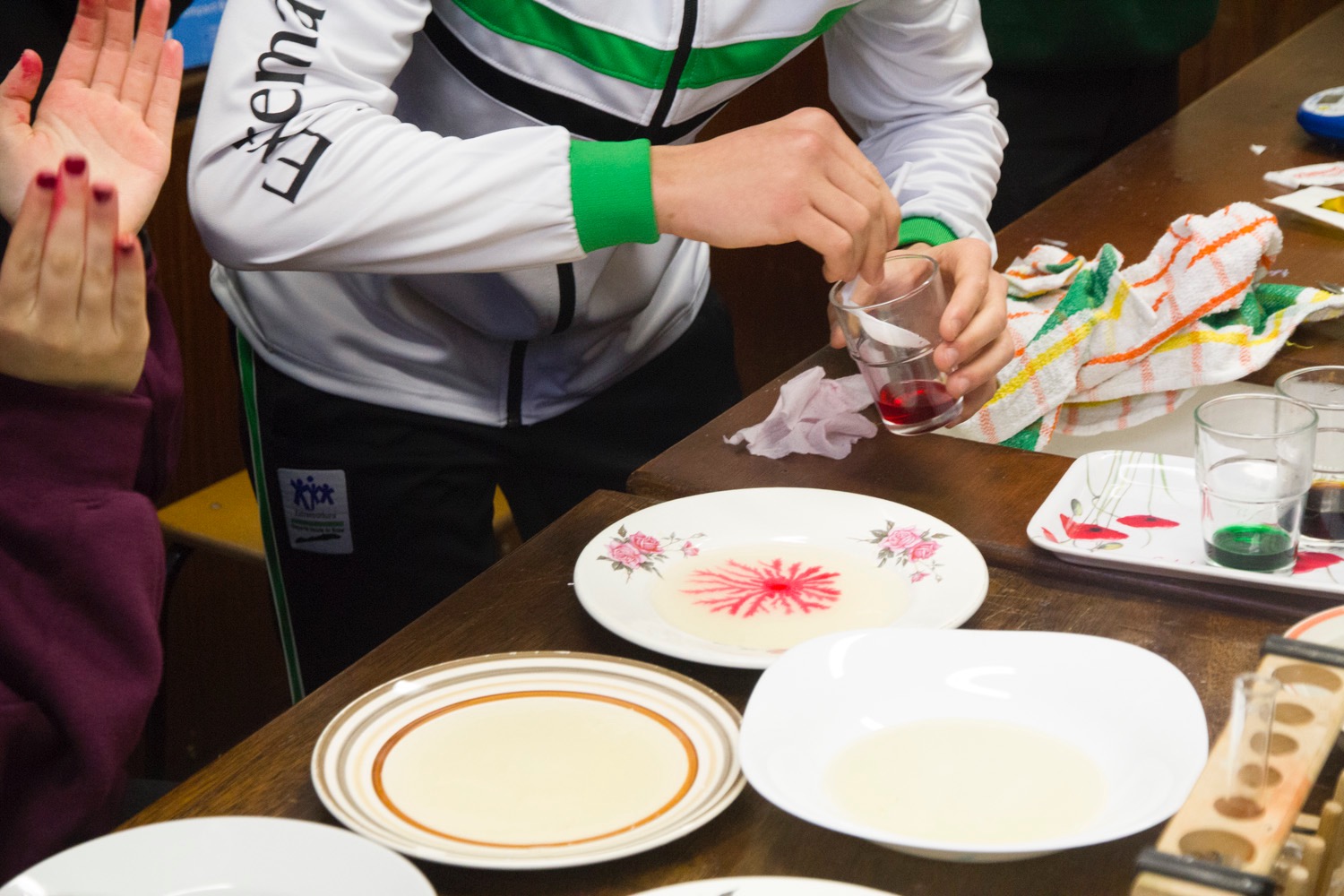
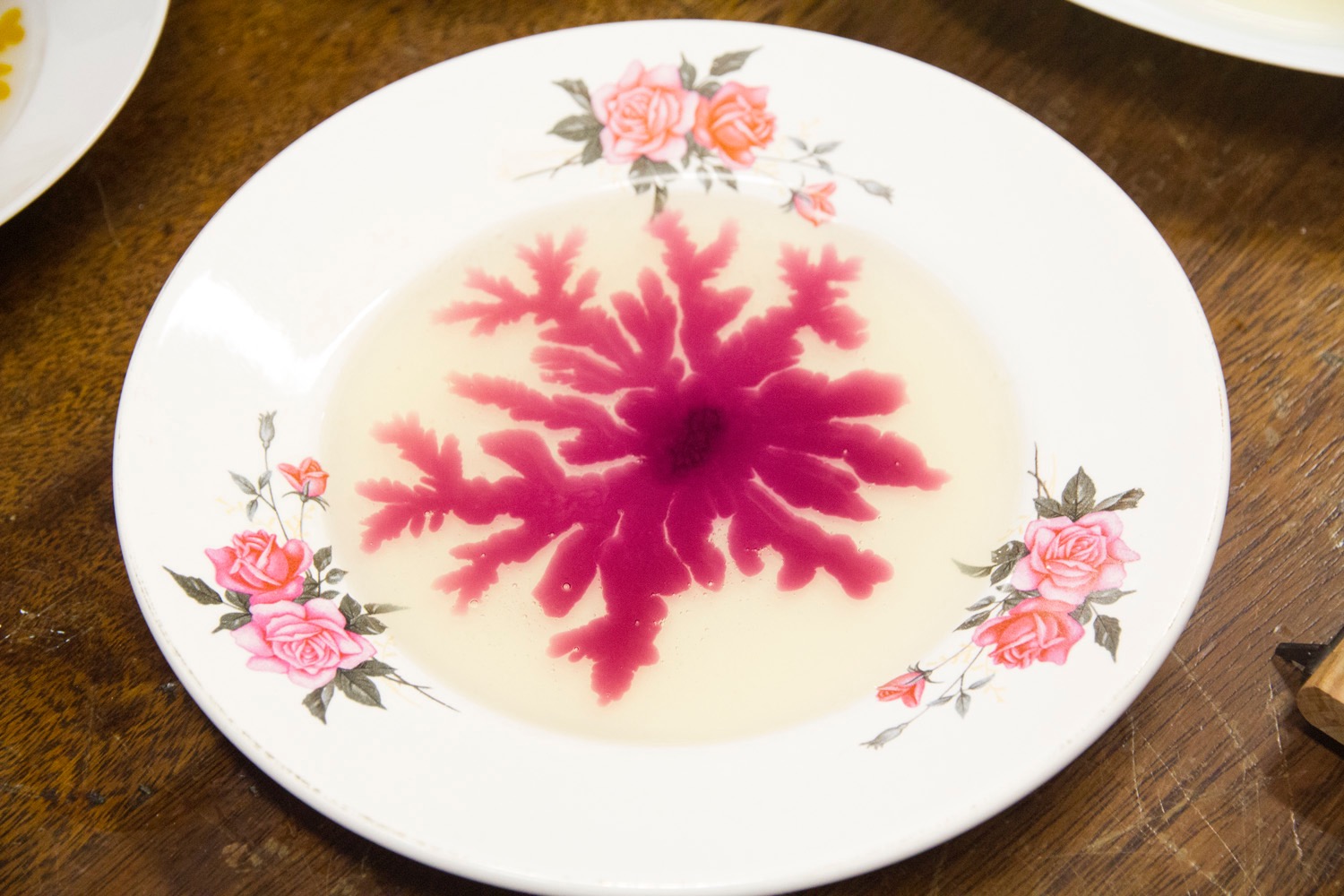
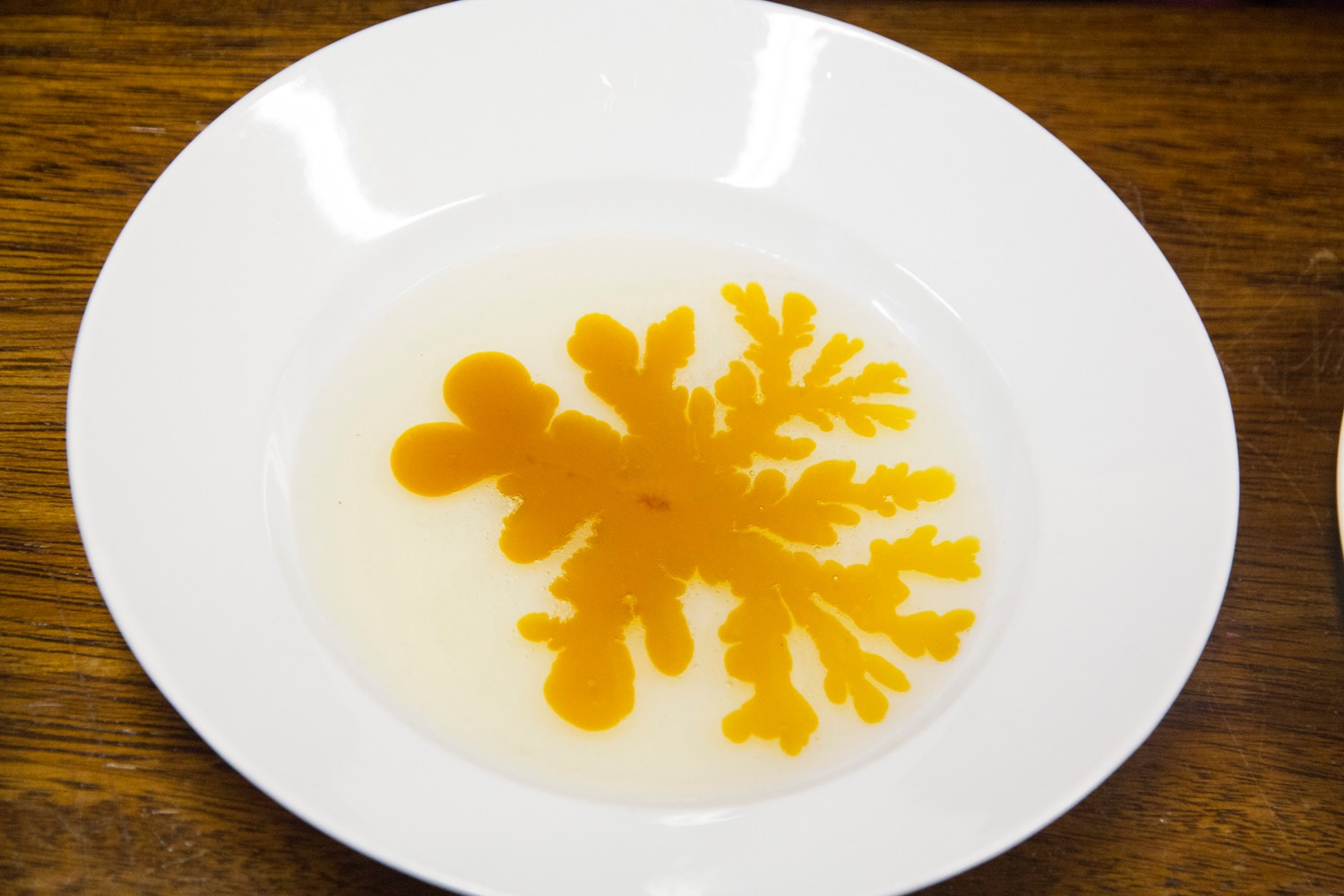
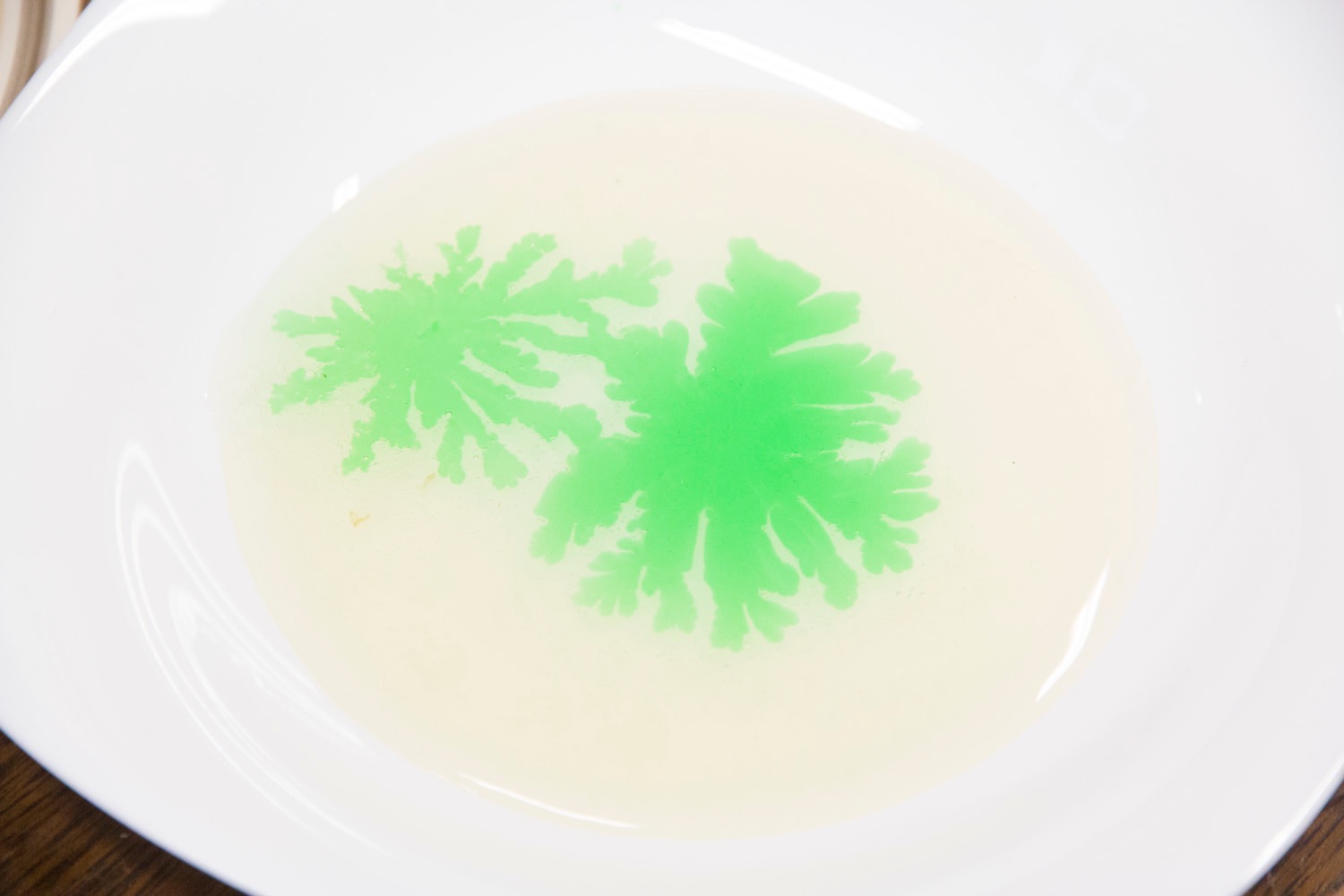
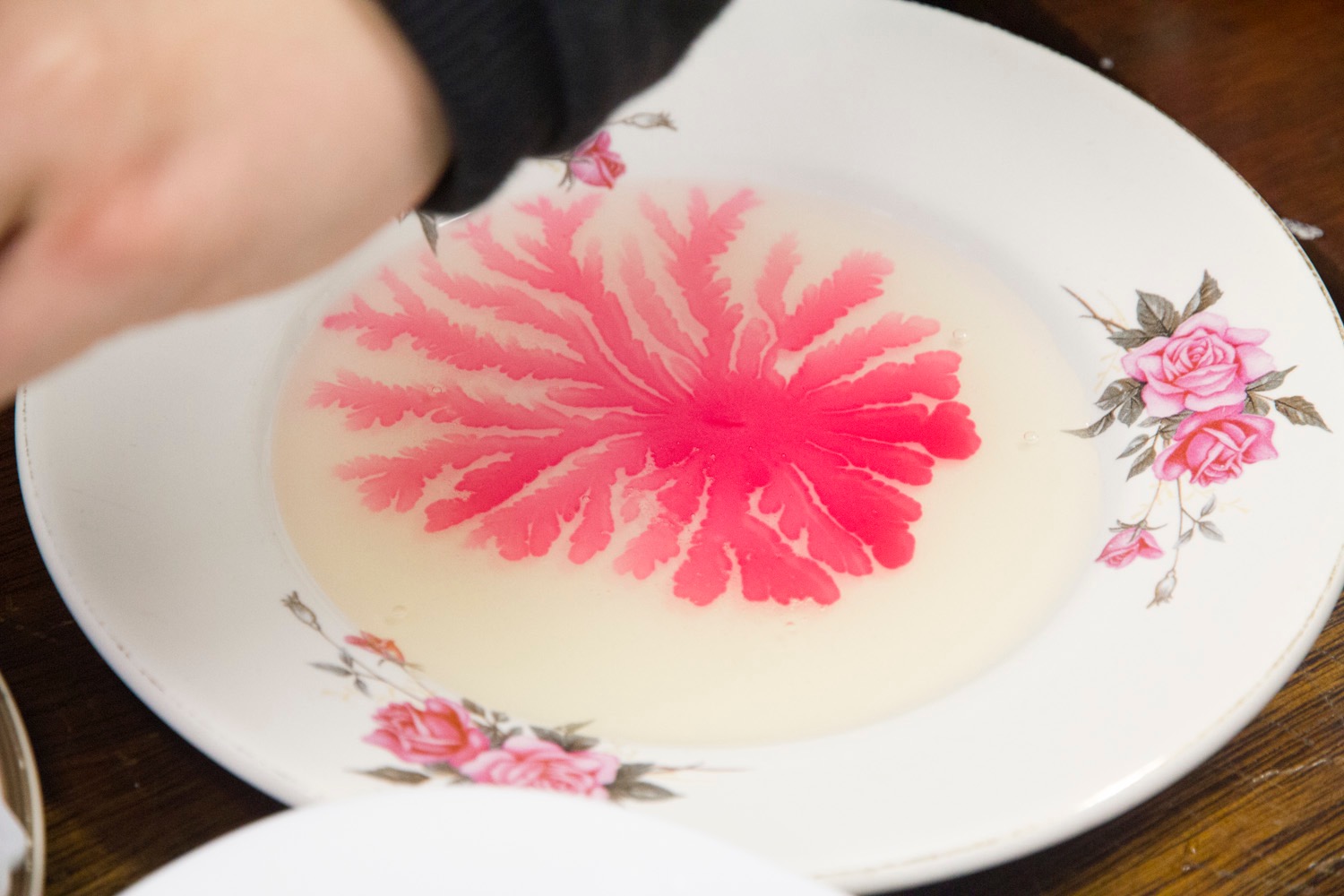
Questions:
1. What is a fractal?
2. Where can we find fractals?
3. Can you name one example of fractal used in cooking?
4. Why do you think that most of examples of fractals are solids?
5. Do you know what a polymer is?
6. What is the key component of the recipe? Why?
7. Why do we have to heat the mixture that contains the Xanthan gum?
8. Why do we have to let it cool?
9. Can you find a natural phenomenon that looks like the fractal of the experiment?
10. Do you know how to make a fractal out of paper? It is easy. Look on the net and you will find lots of examples
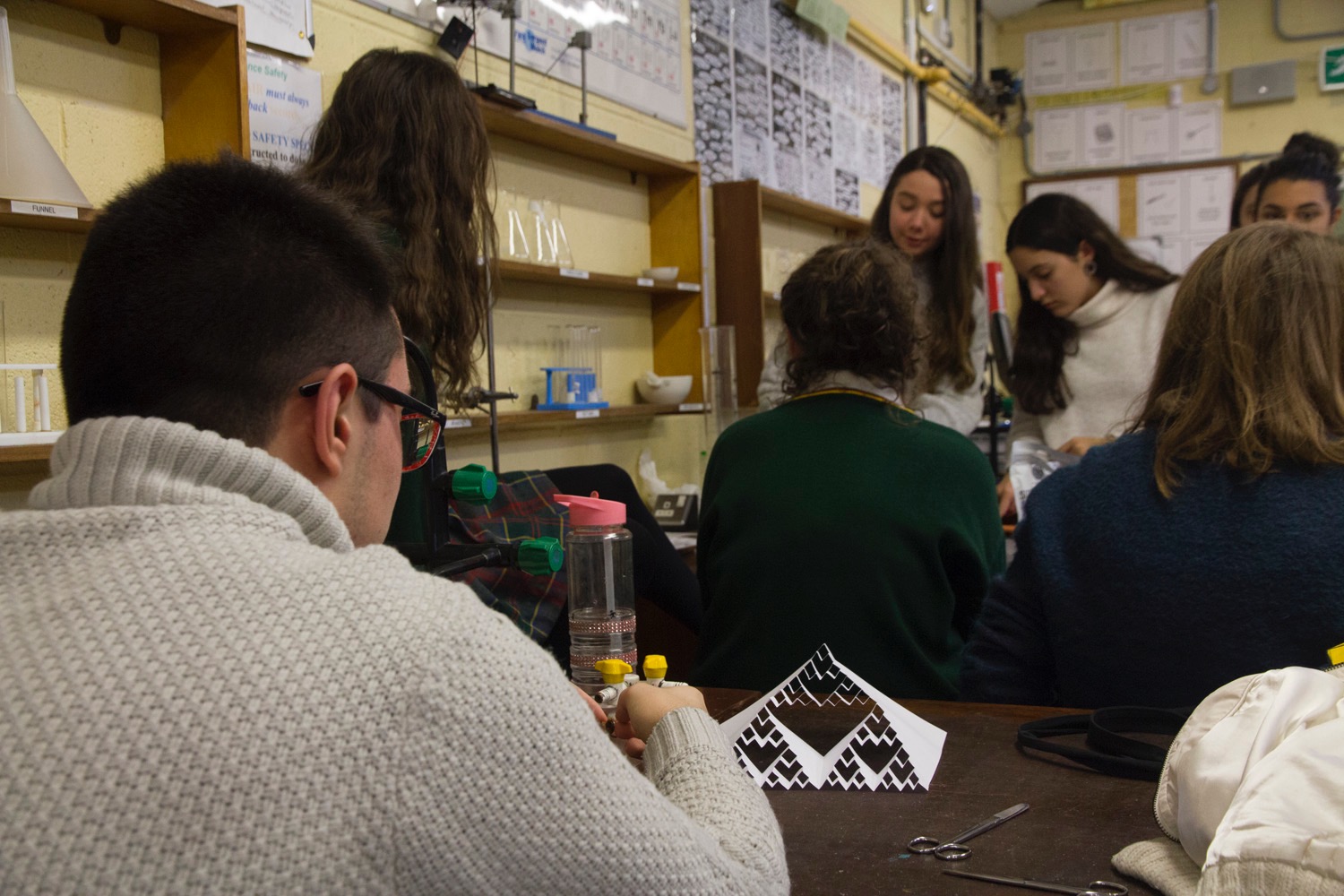
Find the answers in the attached worksheet:

___________________________________________________________________________________________
En español:
Taller: PREPARACIÓN DE UN FRACTAL LÍQUIDO COMESTIBLE
Objetivo: Preparación de un estructura con una imagen fractal mezclando dos líquidos. El fractal ha de formarse a una velocidad tal que su crecimiento pueda observarse a simple vista. Además, ¡el fractal ha de ser dulce!
Ingredientes:
Para el líquido utilizado como base:
- 0,5 L de agua
- 100 g de miel (no utilizar una miel oscura)
- 2 unidades de anís estrellado (para dar sabor)
- 100 g de Xilitol
- 1,5 g de goma Xantana
Para la disolución coloreada
- 15 mL de agua
- 2 g de azúcar
- Colorante alimenticio
Material (se puede utilizar material de laboratorio o sus utensilios equivalentes de cocina)
- Vaso de precipitados de 500 mL
- Probeta de 500 mL
- Balanza electrónica
- Cucharilla
- Vidrio de reloj
- Batidora
- Trípode
- Rejilla ignífuga
- Mechero Bunsen
- Cristalizador
Preparación de la base:
- Añadir el agua y la miel en un vaso de precipitados de 500 mL
- Calentar la mezcla hasta ebullición
- Mientras está en ebullición, infusionar el anís estrellado durante 5 minutos
- Dejar enfriar durante 10 minutos
- Añadir el xilitol y la goma Xantana
- Mezclar con una batidora. Eliminar todos los grumos formados de goma Xantana
- Mantener la mezcla en el frigorífico (4-8 ºC) durante 1 día
Preparación de la disolución coloreada
- Mezclar el agua, el azúcar y el colorante alimenticio
- Calentar la mezcla (no demasiado, 40 ºC en el microondas será suficiente)
- Utilizar disoluciones de diferentes colores
Creación del fractal
- Añadir con cuidado una cucharada de la disolución coloreada sobre la base fría






Preguntas
1. ¿Qué es un fractal?
2. ¿Dónde podemos encontrar figuras fractales?
3. Nombra un alimento con forma de fractal
4. ¿Por qué crees que la mayoría de los fractales son sólidos?
5. ¿Sabes lo que es un polímero?
6. ¿Cuál es el componente principal de la receta? ¿Por qué?
7. ¿Por qué tenemos que calentar la mezcla que contiene la goma Xantana?
8. ¿Por qué debemos dejarla enfriar?
9. ¿Puedes nombrar algún ejemplo que se parezca a la formación del fractal del experimento?
10. ¿Sabrías hacer un fractal con papel? Es fácil. Busca en internet y encontrarás muchos ejemplos

Encuentra las respuestas en la ficha adjunta:
